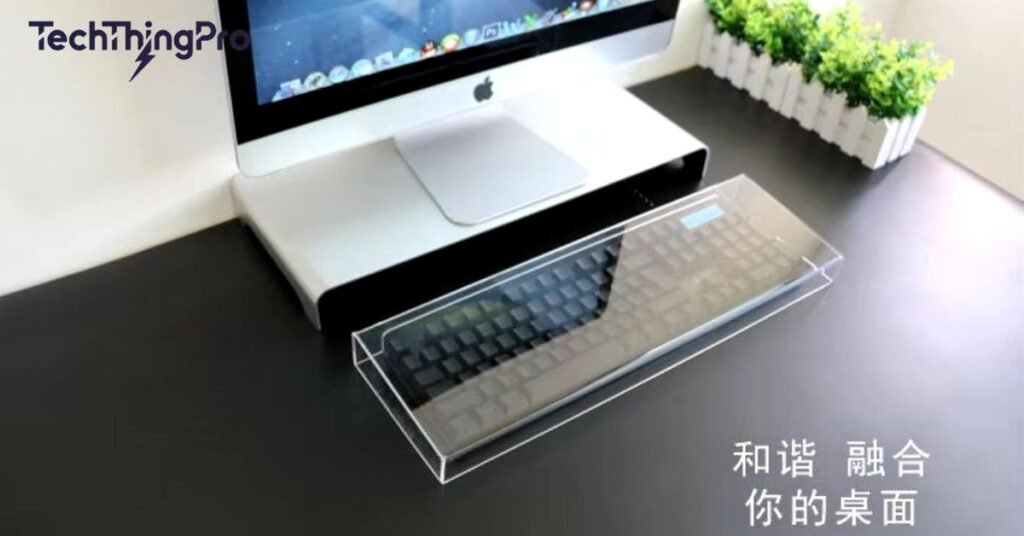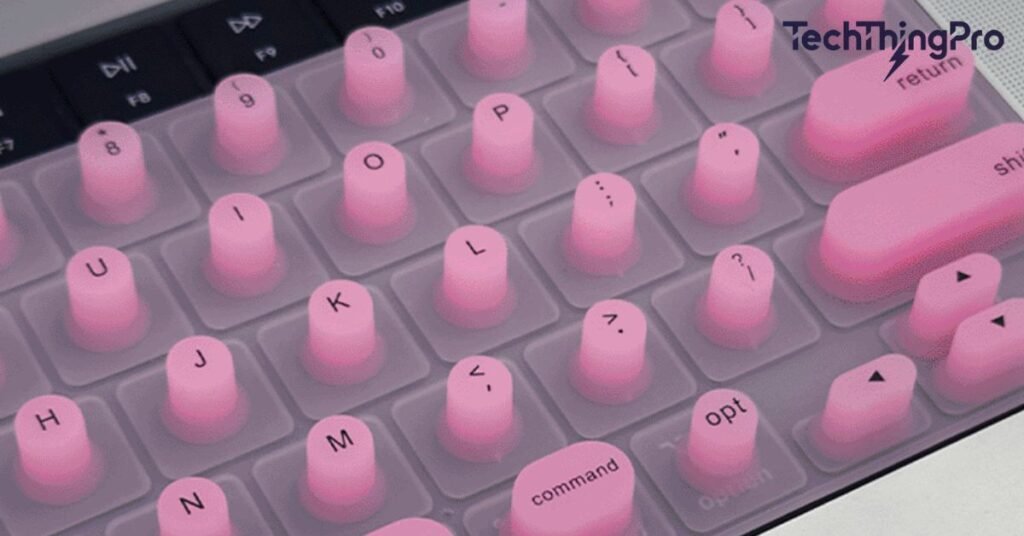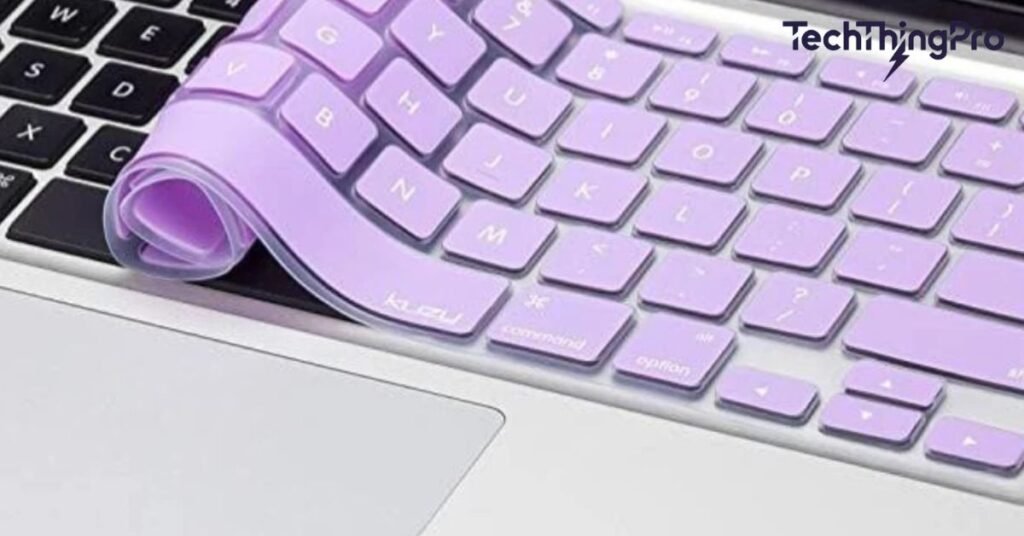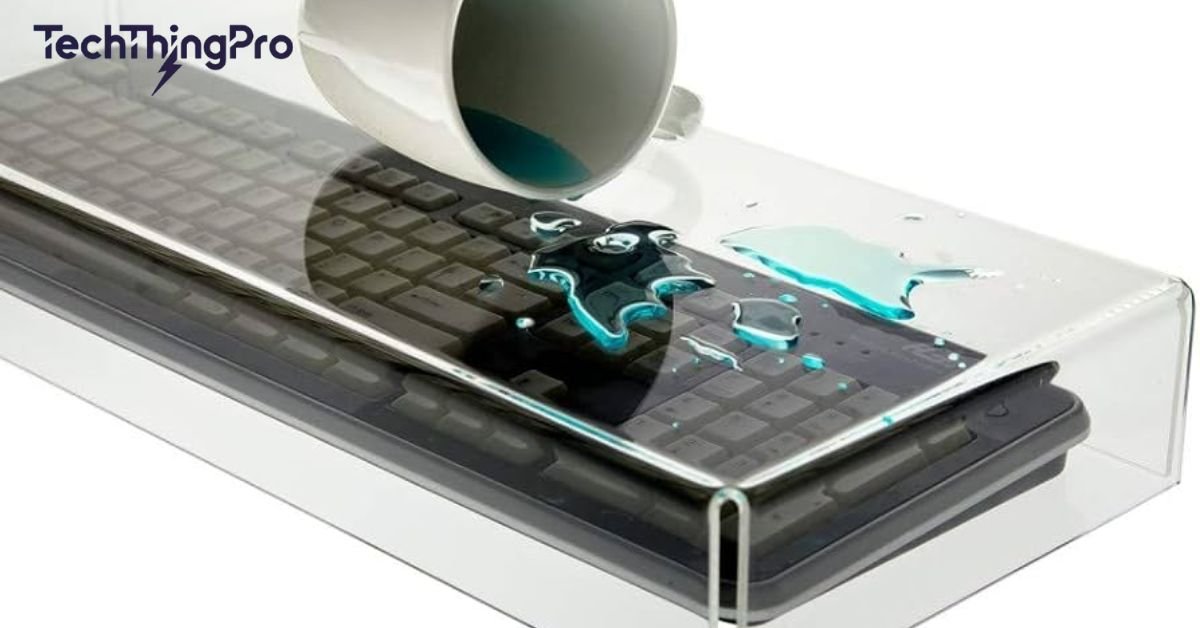Keyboard covers are thin, protective layers that fit over your keyboard to keep out dust, spills, and other damage. They help extend the life of your keyboard by preventing wear and tear. These covers come in different materials, such as silicone and hard plastic, for various types of protection.
The best keyboard covers for protection balance durability with comfort. High-quality options are available to suit gaming keyboards, laptops, and mechanical models. Whether you need waterproofing or dust resistance, there’s a cover to match every need.
What is a keyboard cover?

A keyboard cover is a thin, protective sheet that fits over your keyboard, shielding it from dust, debris, spills, and wear. Most covers are made from materials like silicone or TPU, known for their flexibility and durability, and they come in various styles to fit different keyboard types.
They are especially popular among laptop users who want to protect their device without adding bulk. These covers not only keep dust away but also prevent particles from getting trapped in your keyboard’s crevices. This feature is especially crucial for mechanical keyboards where dust can significantly affect key function.
Read More: SOCD in Gaming Keyboards: The Secret to Boost Your Skills
Some people also use them to improve typing comfort, especially on mechanical keyboards, by adding a softer, quieter surface. While keyboard dust prevention is one of the main functions, modern covers offer even more benefits like protection against spills and key wear.
Benefits of a keyboard cover
Using a keyboard cover has several advantages. First, it helps keep your keyboard clean by acting as a barrier to dust and other small particles. For people who use their keyboards often, especially in dusty environments, a cover can reduce the frequency of cleaning and the likelihood of keys sticking.
Another benefit is spill protection. If you accidentally spill coffee or water, a keyboard cover can prevent the liquid from seeping between the keys and damaging the circuits below.
This protection is invaluable for laptop keyboard cover usage, where a single spill can ruin the entire device. Over time, it also reduces key wear by absorbing the oils from your fingers.
Which can prevent the letters on the keys from fading. In general, keyboard covers protect your device from day-to-day damage and extend its lifespan.
Protect against dust and debris
Dust and debris are constant threats to any keyboard, especially for those who work in environments with particles like hair or crumbs. When dust builds up under the keys, it can cause key jamming and may even lead to circuit damage.
A cover acts as a seal that keeps the mechanical keyboard switches safe from dust, enhancing your keyboard’s longevity and ensuring a smoother typing experience.
Protect spill
Spills can be catastrophic to keyboards. A single drop of liquid can cause short circuits, resulting in permanent damage. Waterproof keyboard protection with a cover is a simple solution that can save you from costly repairs. Covers made from waterproof materials like TPU or vinyl provide the best protection for this purpose.
Reduce key jamming and protect circuits
Key jamming often results from dust and debris buildup, which also damages the underlying circuits. A good keyboard cover for spills and dust prevention creates a barrier that keeps your keyboard functioning smoothly and your keys responsive. Keyboard dust prevention is crucial for maintaining a high-performance keyboard over time.
revent key wear
As you type, the oils on your fingers can wear down the keys, fading the letters over time. Covers can act as a buffer, preventing key wear and keeping your keyboard looking new longer. If you have a specific design or custom look, there are customizable keyboard cover designs that can fit your aesthetic while still protecting your device.
Types of keyboard covers

Keyboard covers come in various styles and materials, each offering a unique set of keyboard cover pros and cons. Choosing the right one depends on your needs, budget, and keyboard type.
For different material (table)
| Material | Pros | Cons |
| Silicone | Flexible, easy to clean, affordable | May attract dust |
| Hard Plastic | Durable, retains typing feel | Less flexible, more rigid |
| TPU | Slim, strong, high protection | Slightly higher cost |
| Vinyl | Waterproof, easy to wipe | Can be prone to scratches |
| Rubber | High grip, dust-resistant | Can be thick for some users |
For different purpose
Different covers suit different purposes. Silicone is great for dust and debris, while hard plastic is preferred by those who prioritize the typing experience. TPU and vinyl provide waterproof keyboard protection, making them ideal for spill protection. For gamers, there are gaming keyboard cover options with additional comfort and durability.
For different installation method (table)
| Installation Method | Description | Best For |
| Slip-on | Simple installation, easy to remove | General use, casual protection |
| Clip-on | Firmly stays in place | Heavy use, office settings |
| Full-cover | Complete keyboard protection | Laptops, travel |
| Partial-cover | Covers specific areas | Custom keyboard setups |
How do I choose the right keyboard cover?
Selecting the right cover involves considering multiple factors, from keyboard type to material and personal preference. First, think about the type of keyboard you have whether it’s mechanical or membrane and look for a cover designed specifically for that type. Choosing the right keyboard cover means finding a balance between protection, comfort, and fit.
Read More: Which Switches are Best for Gaming?
1. Choose according to the keyboard type
Each keyboard type requires a different style of cover. Mechanical keyboards often need covers with specific key spacing, while laptops need slimmer, flexible covers.
2. Choose according to the keyboard layouts
Keyboard layouts vary, so make sure to choose a cover that fits your layout (e.g., ANSI or ISO) for the best performance and comfort.
3. Choose according to the material
Each material TPU, silicone, vinyl, and rubber offers unique benefits. Silicone is flexible, while TPU is more durable. Silicone vs. hard plastic keyboard cover comparisons often come down to feel and longevity.
4. Choose according to the use environment
Consider the setting you’ll use the keyboard cover in. For an office setting, durability may matter most, while for a portable setup, lightweight and slim covers are ideal.
5. Choose according to the color and design
Some users choose covers for aesthetic reasons. Customizable keyboard cover designs allow you to personalize the look of your workspace while protecting your device.
Do I need a keyboard cover?

- A keyboard cover protects against dust and debris, keeping your keys clean.
- It prevents spills from damaging your keyboard, especially in high-risk environments.
- Covers reduce key wear, extending the life of your keyboard.
- They can enhance typing comfort with softer surfaces, especially on mechanical keyboards.
- Using a cover can improve resale value by keeping your keyboard in better condition.
Is it worth getting a keyboard cover?
- Keyboard covers are an affordable investment for protecting your keyboard.
- They save time on cleaning by preventing dirt buildup and spills.
- Quality covers can last for years, providing long-term protection.
- A cover adds a personal touch and can enhance your workspace’s aesthetics.
- They minimize the risk of costly repairs from accidents and damage.
Do keyboard covers make typing harder?
- Some users may find that covers slightly dampen the typing feel.
- Silicone covers can make typing quieter, which some may prefer.
- Thicker covers may create a softer surface that feels less responsive.
- The typing experience may vary based on individual preference and keyboard type.
- Ergonomic covers are designed to enhance comfort and reduce strain while typing.
Do keyboard covers cause overheating?
- Most modern keyboard covers are designed to allow airflow, minimizing overheating risks.
- Thinner materials like TPU or vinyl are less likely to trap heat.
- Laptops with proper ventilation typically do not experience overheating from covers.
- Regular cleaning and maintenance of covers can prevent overheating issues.
- If you notice overheating, consider using a cover with breathable material.
How often should I replace my keyboard cover?
- Replace your cover if it shows visible wear or tears.
- A cover should be replaced if it no longer fits securely on the keyboard.
- Frequent cleaning issues or discoloration can indicate it’s time for a new cover.
- If the cover becomes sticky or hard to clean, it’s best to replace it.
- Regularly inspect your cover every few months to ensure it still provides adequate protection.
Conclusion
In conclusion, a keyboard cover can be a practical addition to protect your keyboard from dust, spills, and general wear, especially if you spend a lot of time on your computer. These covers offer various benefits, from improving cleanliness and extending keyboard life to adding a personal touch to your workspace.
Choosing the right cover depends on your specific use, material preferences, and environment. If you often work in messy or high-risk areas, a waterproof or durable cover might be ideal, while those prioritizing aesthetics might prefer a stylish, customizable option. Ultimately, a keyboard cover is a small investment with potential long-term value, keeping your keyboard safe, clean, and functional for years to come.

Lily Watkins is an experienced tech writer specializing in the latest trends and innovations. She is passionate about making complex technology accessible and shares her insights on TechThingPro.com.

